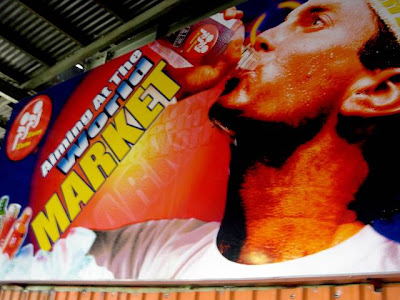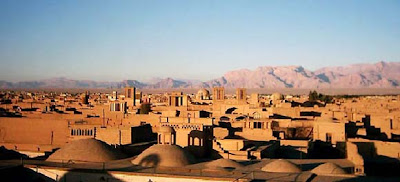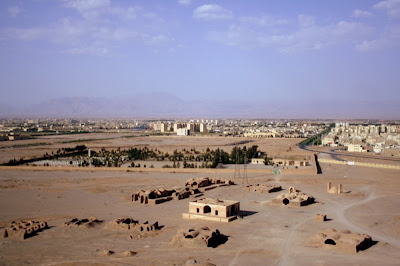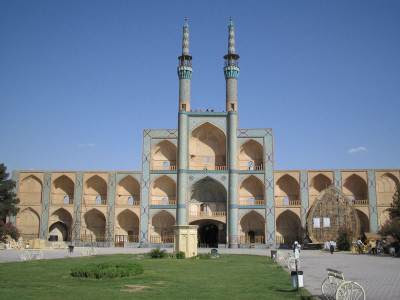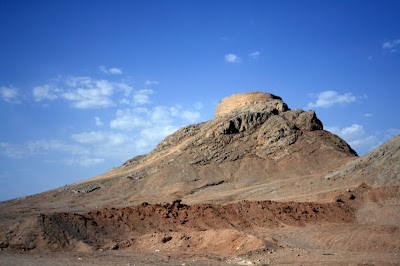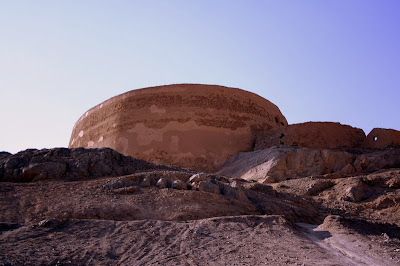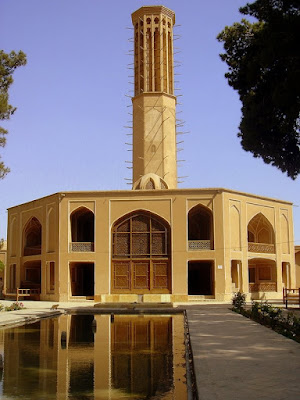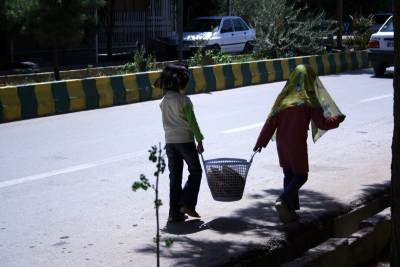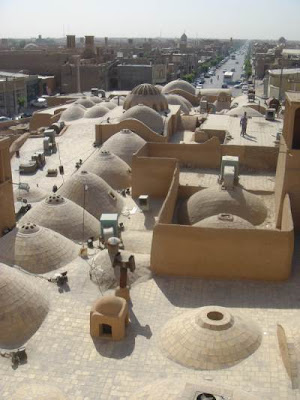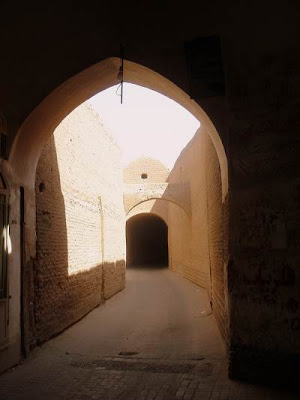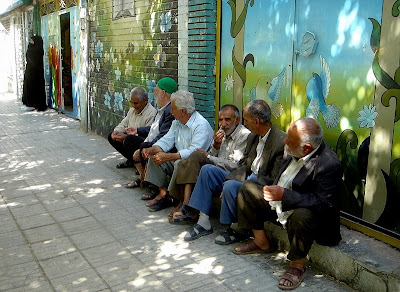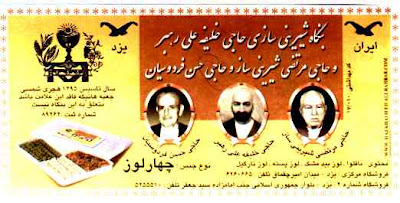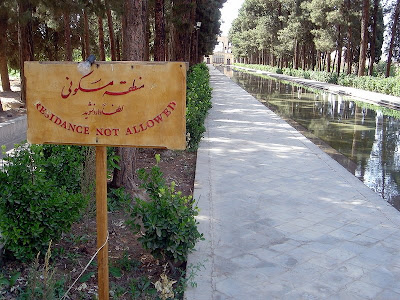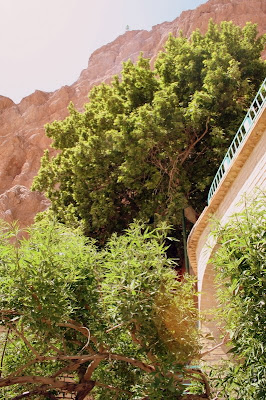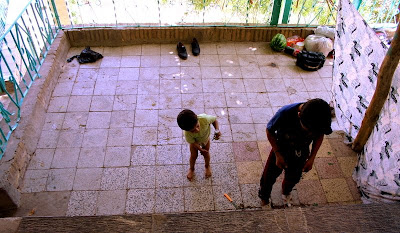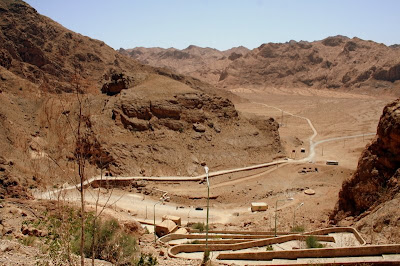“Khoda Marg Beheshoon Bedan!” (May God kill them.)
I was surprised, as the worst curse my friend's granny uses would be “Saar-e Omar” -- which means "Omar’s Head" (disputed Sunni Imam). After some more chatting, she said it again....and again a few minutes later.
The young man she was speaking to, who helps her with all kinds of house maintenance, also has a full time job with the municipality of Shiraz. That day he worked his usual shift from 5am until dark, but without the allotted 2 hour break, and no lunch was provided.
They were preparing the city for the arrival of “Rahbar”—the Supreme Leader, who was visiting Fars province for a week. The city had to be sparkling, and free from rubbish, all dolled-up with massive posters and banners of the leader sweeping across every street view. Every few meters a giant poster billowed. At one intersection we counted 10 within eyesight. Each poster was of a different pose and mood, sometimes with a smile, or sometimes with a serious but compassionate gaze into the distance. It must have been quite a photo shoot. It was also interesting to notice the difference between the current leader’s wide grin beside the more austere, stoic look on Ayatollah Khomeini’s face in some of the posters. I guess nobody likes a moody leader anymore.
Half of the streets in the city were closed off. All the buses leading to the Hafez stadium, where the leader was giving his first day’s speech, were free. Men, women and children chaotically jammed into the buses. The footage we watched on television was bewildering. Thousands of supporters swarmed like ants around the leader’s bus as it approached the stadium, crying out and banging on the window behind which his black-turbaned head timidly nestled, as he waved his hand slowly and smiled. He looked so tiny and vulnerable next to the maddened masses. His smile seemed to hide a hidden terror, which we were not sure of. We wondered if he would ever make a trip like this again, so loudly heralded in advance.
It was announced that a free kabab lunch was to be served in Jahan Park for those who visited from outside the city. (noted that in Serbia it was quite similar, but with free ‘cevapis’—a pork and lamb kebab.)
Near our place, a microcosm of the big event was taking place. An ice cream truck giving away free ice cream was attacked by hordes of greedy consumers. Every once in a while the ice cream man threw out an entire box of treats, and the crowd would literally tear it to pieces, like lions fighting over a leg of meat. I thought surely some of the people were poor and hungry, but as far as I could tell, that didn’t seem to be the case. Several giggling teenage boys hoarded bundles of 10 or more melting ice cream packs in their hands, definitely not able to eat them all, or even get home in time before they melted.
One taxi driver contemplated, "If only someone would come burn these posters in the night. But that doesn't happen anymore. No one is into revolutionary stuff anymore. Back then, it would happen..."
Passenger added, "Yes, now everyone is just glued to their mobiles! No one cares, everyone is selfish and into material things..."
and etc.
Another time, one woman prayed: “Khodah koneh baroon nayyad. Bad migan az ghadam-e Rahbar bood!” (God, don’t let it rain. Or else the people will say, it’s thanks to the Leader's coming!). A similar situation was brought up, when the Shah visited a town in 1978, a few days after he left there was a big earthquake, and everyone blamed it on him. Plenty of superstitious beliefs like these persist.
Other strange belief systems and practices persist among the more educated classes as well. For example, often my family would pose questions to me, but directed to the person sitting next to me, usually my grandmother, as if I were a child, or not there.
They don't believe that I can cook, and hover behind me any time I attemp something in the kitchen. When I do something contrary to their system (kitchen-epistemology), they ask: "Does it really taste good that way?" Yes, I say, it's okay. "But does your husband like it?" they say (which is the real question). I'm also convinced sometimes they still don't believe I am married, or they quickly forget, even though they met my husband, and he even sang them a song in Persian...
Another strange phenomenon, young girls become “aunties” pretty quickly, commenting earnestly on who got fat or skinny and why, or who’s recently gotten plastic surgery. One of my cousins says she wears an item of clothing only once, unless of course the crowd is different.
...to name a few.
But overall, the Shirazis seem like a very happy bunch, always partying and fooling around. In the spring and summer, they spend most of time in ‘baghs’ -orchards- around the city. Temperatures are much cooler and shadier, and families sit around eating, drinking, cracking nuts and seeds, playing, singing and dancing from noon until midnight. Most parties or dinners take place in a bagh at this time of year.

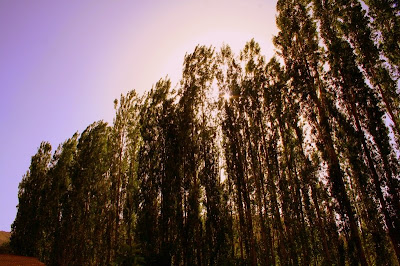 Latest news, however, is that Arabs from the Gulf (Arabian or Persian?!?) are quickly buying up land in Shiraz. The weather here in the summer is far cooler than in the Gulf, especially in the baghs. Several massive hotels are also being built in Shiraz, being labelled by some "the next Dubai."
Latest news, however, is that Arabs from the Gulf (Arabian or Persian?!?) are quickly buying up land in Shiraz. The weather here in the summer is far cooler than in the Gulf, especially in the baghs. Several massive hotels are also being built in Shiraz, being labelled by some "the next Dubai."

The melodious accent, along with other characteristics, could compare to a southern American twang, with a famous "oo" added to the end of everything. Just for fun, some things a Shirazi might say (this may only be interesting for the Iranian readers):
Oo shab to baghoo khayli khosh gozasht. (We had fun that night in the orchard!)
Che’qha’ zesht shodan! (He's got so ugly!)
Az yakhchaloo yey ab mivey begir. (Get some juice from that there fridge.)
Ee gowlha che qashang-an (These flowers are so purty)
Ye-ha! (similar to Yee-haw)
Bakesh nist. Tarifi-am nadaran. (It ain't nothin special)
Migam Ha…. (I'm tellin ya...)
Haa. (yep)
Bah bah (mmm mmm)
Oh’ Oh’ Oh’! (Oh Gawd!)
Ay Val. (You go boy/girl!)
E’qad dawq bood emrooz. E’qad dawq bood. (It sure was hot today...soooo hot)
Ee re? Ya oo re? (This'on? Or that one?)
Yey javoonak ma-re rensand. Khoda obr beysh-oon bede. (A youngin' brought us home, God bless him.)
Chizi an-chenani nist. (It was nothin real special)
Tokhmak bokhorim. (lets eat some seeds)
Kakoo (bro)
Finally, the typical intro to a phonecall in Shiraz:
Allo? Salam. Hal-e Sar Kar? Chetowwri? Khoobi? Bacheha Khooban?.....
And in Tehran, for comparison:
Allo? Salam. Khoobi? Mokhlesim. Nokaretam. Ghorboon-et......

